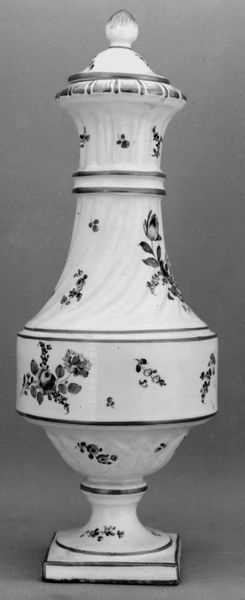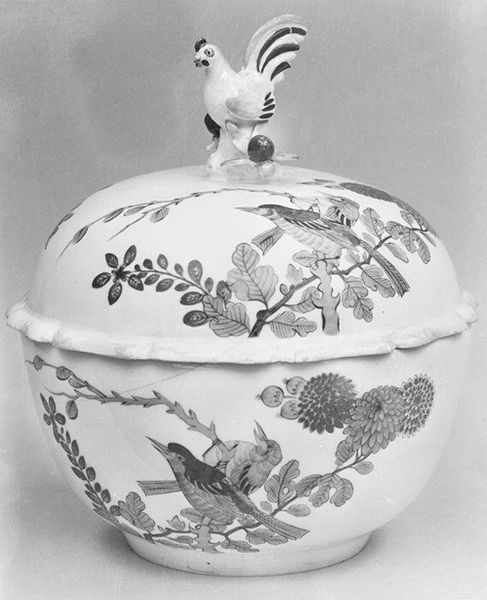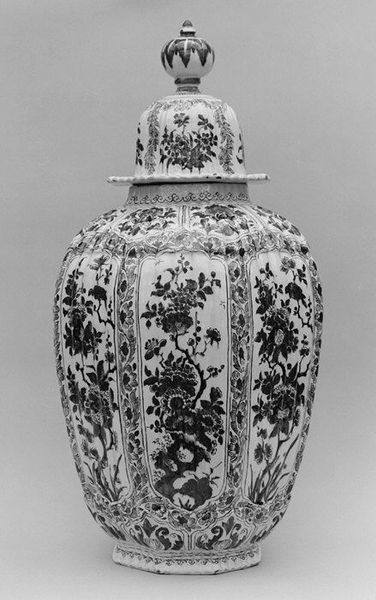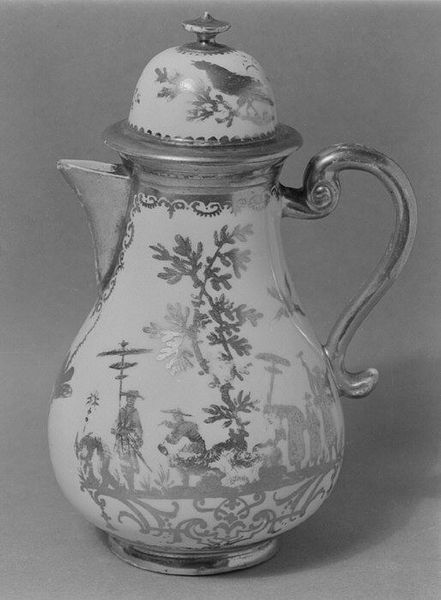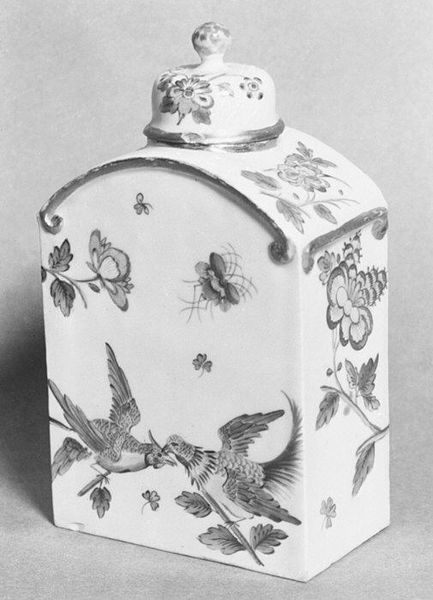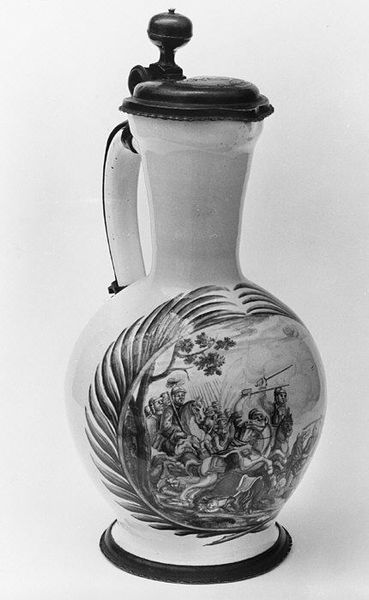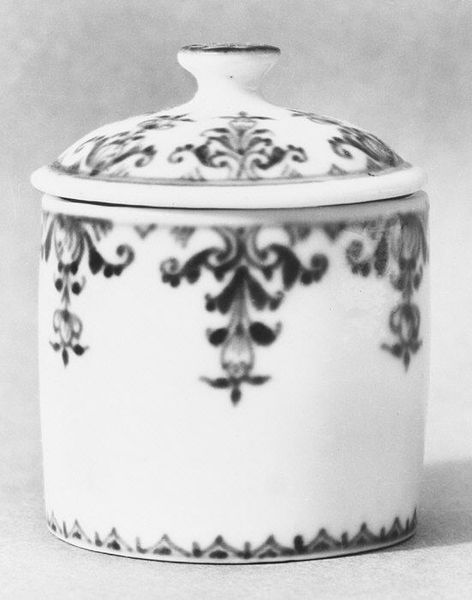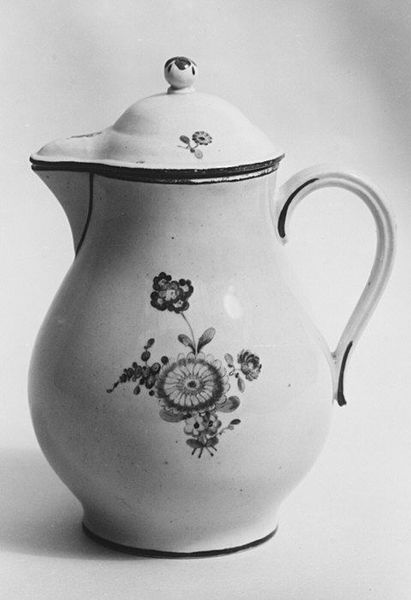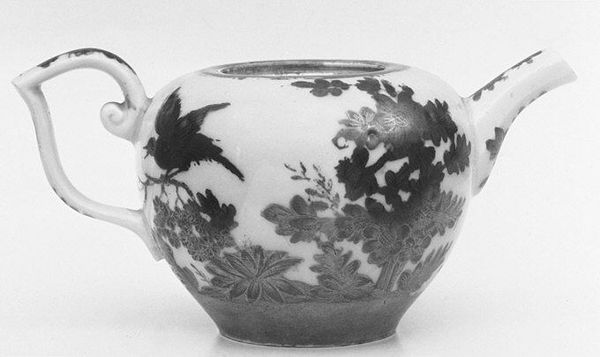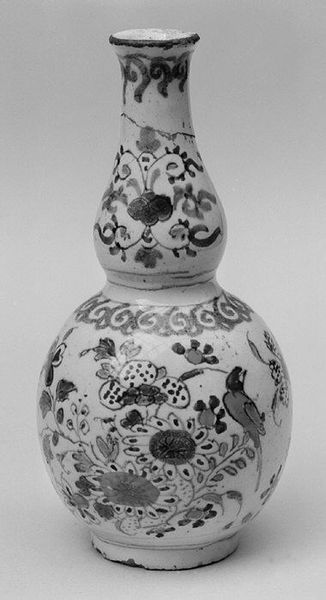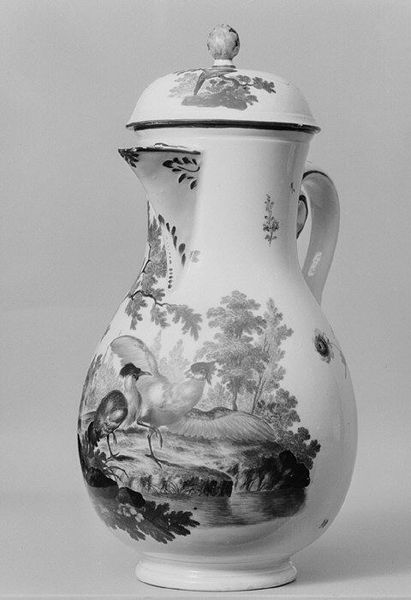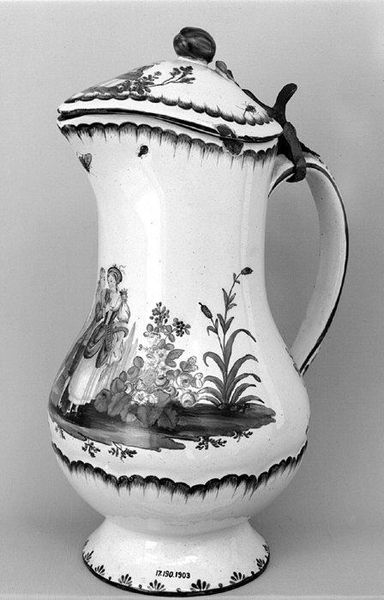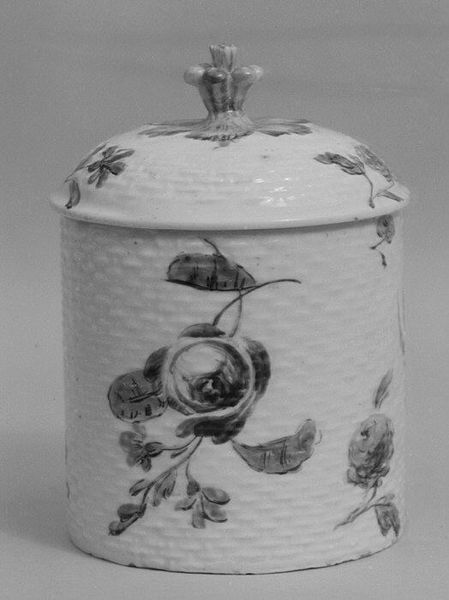
ceramic, porcelain, sculpture
#
ceramic
#
flower
#
porcelain
#
sculpture
#
decorative-art
#
rococo
Dimensions: Height: 3 1/2 in. (8.9 cm)
Copyright: Public Domain
Curator: So, here we have a scent bottle produced by the Meissen Manufactory between 1765 and 1775. It’s currently held at the Metropolitan Museum of Art, a charming piece crafted from ceramic porcelain. Editor: Porcelain… the alchemist's dream! It reminds me of powdered wigs, secret rendezvous, and someone desperately trying to mask the stench of 18th-century unwashed humanity with rosewater. You know, a heady, if somewhat tragic, romance bottled up in that little vase. Curator: Indeed, that Rococo flair practically screams aristocracy. Look at the floral designs, both painted and sculpted, adorning the surface. Flowers have been a prevalent symbol for centuries, embodying ephemerality, beauty, and often love. Here, they're elevated, signifying the importance of scent and luxury in courtly life. Editor: Luxury! Yes! It is not just flowers; the ceramic practically blossoms with them! And the slightly bulbous shape gives it a rather playful character— a kind of gentle smugness. Like it knows all the latest gossip and perfumes of the day. What kind of psychological power do you think a wealthy woman would wield with such a perfume in their possession? Curator: Possibly immeasurable power. Consider this was an era when personal presentation and sensory experience carried significant weight. The very scent someone chose would project character, intention, and of course, social rank. Even today we assign meanings. Rose might imply love or sympathy. Lavender can evoke serenity and nostalgia. This bottle held an olfactory message, carefully constructed, like a coat of arms for the nose! Editor: A coat of arms for the nose! Wonderful. Though let’s not forget the container itself—a deliberate artwork showcasing status as much as holding perfume. This is pure rococo drama played out on a tiny, delicate stage, all artifice and sensual indulgence. Curator: A fitting observation. Scent bottles were also keepsakes, displayed openly, thus serving as declarations of status as much as functioning to distribute fragrance. As time went on and personal expression expanded, that sentiment began to dissipate. Editor: I see this little bottle then, more than an accessory. It is a story frozen in porcelain. Every tiny bloom whispers secrets. And suddenly I wonder...if I dabbed on some 18th-century perfume today, would its coded message still land, or would it simply smell nice? Curator: That’s the beauty of objects like these, isn’t it? They transcend simple utility. Their inherent symbolic richness persists long after their original owners fade to dust.
Comments
No comments
Be the first to comment and join the conversation on the ultimate creative platform.
